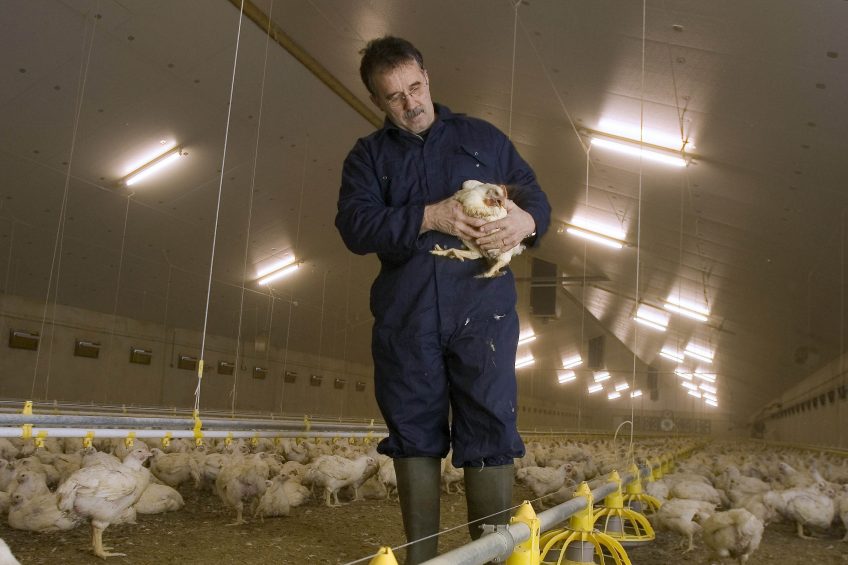Emerging opportunities for alternative feed additives

Two classes of feed additives have received considerable attention for their potential to improve gut health and animal performance; these are butyrate and botanically derived products. Trials have evaluated their optimal use as a feed additive in both separate and combined applications.
Butyrate is recognised to be an important signalling molecule that can trigger a variety of responses in animal cells and intestinal bacteria, depending on where in the digestive tract it is released. It has been described to modulate innate immune reactivity, to stimulate enterocyte and villi development and to steer gene expression, to name only a few working mechanisms.
The effect of botanical or phytogenic products, on the other hand, depend on the nature of the active ingredients it is composed of. Several botanical components have been associated with improved digestion, anti-oxidative properties and effects on gut microbial composition.
Challenge no. 1: Improving the potential of active ingredients
To maximise profits, feed additive producers have to invest in R&D programmes that focus on maximising the potential of a certain type of active ingredients. For example, for butyrate to be able to exert its full potential, it is hypothesised that it has to be delivered along the entire gastro-intestinal tract, to trigger the maximum number of butyrate-depended responses of a wide variety of functionally and spatially distinctive cell types. Although several coated butyrate products are said to have such target release characteristics, only a few of them will be able to deliver butyrate in the entire digestive tract. These products are referred to as Precision Delivery Coated Butyrates (PDCB).
For botanical products, the challenge consists of deciding which herbs, essential oils or extracts will end up in the final phytogenic product. To maximise the likelihood that the final product will exert beneficial functions in a variety of (intestinal) conditions, putting together a mixture consisting of bio-active ingredients that have been evaluated in a variety of functional assays, will be of critical importance. Apex 5, for example, is a botanical product that is the result of a series of subsequent in vitro and in vivo tests to continuously select for botanical components that are highly active at the level of feed intake, digestion, anti-oxidation and modulation of gut microbial activity, including the inhibition of bacterial communication (quorum sensing).
Challenge no. 2: Finding the optimal use of products
Once these active ingredients supporting gut health have been turned into products that get the most out of their potential, the challenge is to find the optimal way of using them. Indeed, PDCB and botanical (BO) products can trigger such a wide range of mechanisms supporting gut development digestion and nutrient absorption that theoretical arguments could always be found for both of them that justify including them in the animal’s feed at any stage of the production cycle.
A more precise advice regarding the optimal use of PDCB and BO in a specific production context, will therefore benefit from additional experimental trials comparing the inclusion of both products separately or in combination on one hand, and feedback from customers on the other hand.
To demonstrate the value of such a step by step approach, experiments assessed what the best possible feed additive program would be in a commercial farm-like environment in Brazil, in terms of animal performance and profitability for the producer.
Experimental setup
Firstly, the effect on supplementing different levels of PDCB (0.5, 0.75, and 1 kg/T) only in the prestarter and starter feed (day 1-21) of broilers was evaluated. Zootechnic performance was measured at day 21, as well as at the end of the trial (day 42).
In addition, it was investigated whether adding PDCB or BO during the grower and finisher stage could further improve the performance of broilers, on top of any effects observed after supplying birds with PDCB in the (pre)starter period. Treatment groups consisted of the negative control (no additives added to the feed), the positive control (AGP’s added in all stages), and 3 groups that received (pre)starter diets with 1 kg/T PDCB. In one of these groups, no additive was added in the grower and finisher stages; in another 0.50 kg/T and 0.25 kg/T PDCB was included in the grower and finisher feed, respectively; and in the last group, grower/finisher feed contained 0.15 g/T BO.
Results
In the first experiment, higher PDCB inclusion levels resulted in higher feed intake, reduced FCR, and increased final weight, both at day 21 (Figure 1) as day 42 (Figure 2). In addition, the final weight of broilers that had been given PDCB in the starter only, was comparably to birds that received the AGP’s.
The weight was improved even more when PDCB was supplemented to the grower and finisher feed as well. The best results on feed intake and FCR, however, were obtained when BO was added in the grower/finisher, apart from PDCB in the starter feed (Figure 3). Importantly, given the lower inclusion level needed for the BO, the profitability for the producer was higher in the PDCB/BO group, as compared to the treatment where PDCB was given in all treatments.
Conclusion
These results provide additional evidence for the use of PDCB in (pre)starter feed as well as a proof-of-principle for the concept that PDCB and BO can be combined in a program approach. In this situation, PDCB (starter) and BO (grower/finisher) gave the best results in terms of performance, as well as in profitability for the farmer.
Trials like these demonstrate that apart from providing feed additives with excellent quality/functionality, feed additive producers and farmers can learn from investigating the optimal use of different feed additives, either applied separately or in combination.
*BO = Botanical product = Apex 5
PDCB = Precision Delivery Coated Butyrate = Adimix Precision













